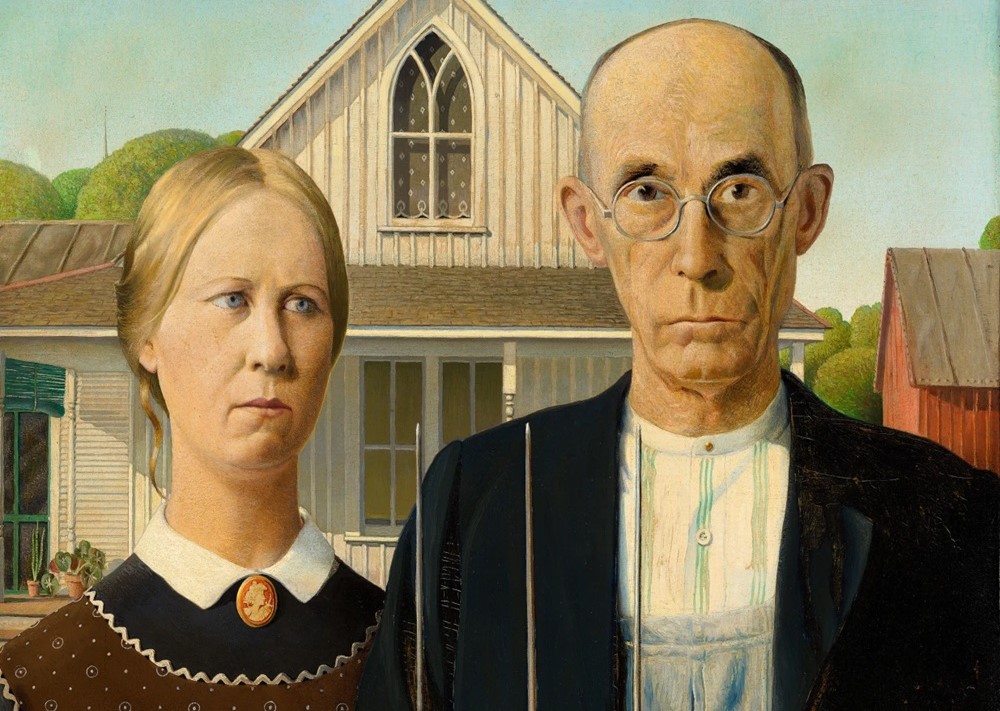American art’s rich and varied strands interweave the country’s complex history, cultural transformations, and many identities that have moulded its culture, creating a lively mosaic. American art encompasses a wide range of experiences, beliefs, and aesthetics, from the avant-garde manifestations of the digital age to the art forms created by indigenous peoples before European colonialism. The well-known American artworks emphasize the renowned works of art and notable artists and the underlying currents that characterize this country’s distinctive creative scene.
The history of American art is one of constant change, characterized by audacious endeavours, revolutionary movements, and insightful analyses of social justice, freedom, and identity. The story includes the unfiltered, instinctive expressions of the Abstract Expressionists, the sometimes satirical and critically analyzed Pop Art portrayals that reflect the country’s consumer culture, and the profoundly personal and political stories entwined with Contemporary art.
The Art and Symbolism of Flags
Flags are no longer just pieces of cloth; they are now potent symbols that encapsulate the spirit of countries, groups, and ideas. Since ancient times, flags with symbols representing unanimity and purpose have inspired troops to engage in combat. The flag is a solid symbol in American art because it embodies many intricate meanings and elicits a wide range of emotional reactions. It is a canvas that artists use to portray stories of American identity, patriotism, dissent, and freedom. It is more than just a national symbol.
American Gothic
Grant Wood is a prominent figure in American art and the American Regionalist movement of the 1930s. Regionalism was integrated by Wood, who focused on depicting rural life and landscapes to highlight the unique characteristics of the various American areas. “American Gothic,” an iconic American painting that has influenced popular culture, is Wood’s most well-known work of art. A grim-faced farmer and his daughter, who has come to represent American fortitude during the Great Depression, stand in front of a farmhouse. The artwork impacts literature, film, advertising, and other artistic mediums.
Nighthawks by Edward Hopper
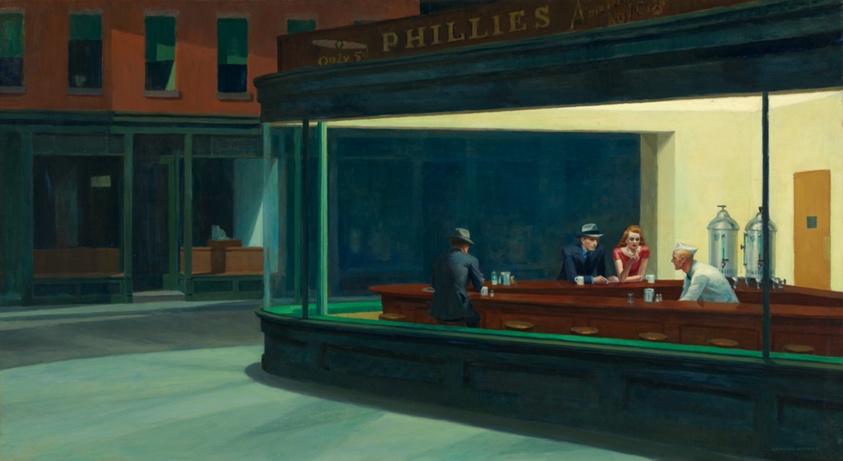
Courtesy – The Art Institute of Chicago
Edward Hopper’s “Nighthawks” is one of American art’s most well-known and recognizable pieces. This masterpiece from 1942 is well known for its moving depiction of the loneliness that permeates modern life and urban isolation. The painting shows a diner against the backdrop of a completely dark city street. The depiction of the three restaurant patrons and the lone waitress adheres to Hopper’s characteristic style, emphasizing the interaction between light and shade. The bold geometric lines and the stark contrast between the inside and exterior enhance the overall reflective environment.
Jimson Weed by Georgia O’Keeffe
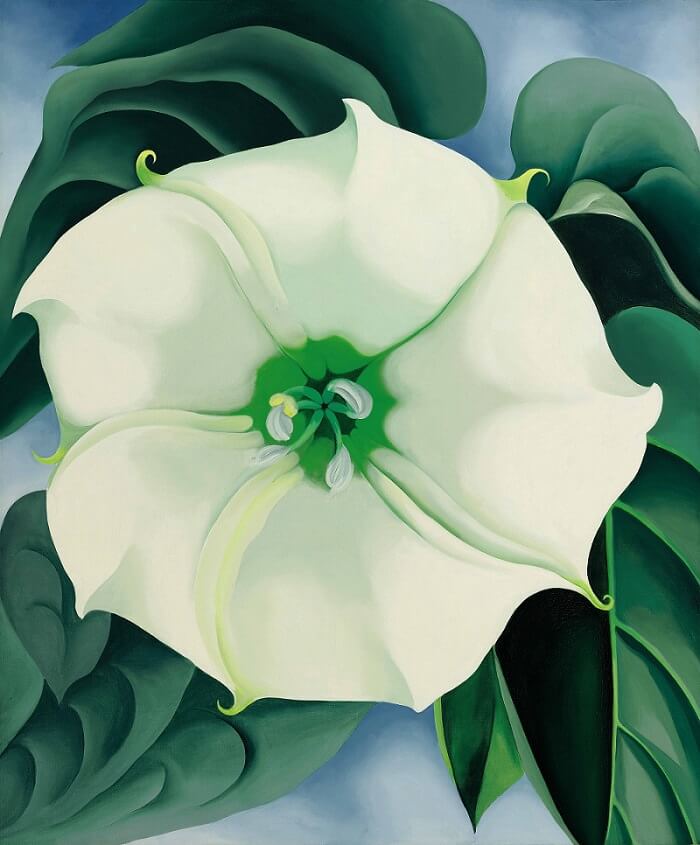
The well-known artwork “Jimson Weed/White Flower No. 1” was created by American Georgia O’Keeffe. One of O’Keeffe’s large-format flower paintings from 1936, this piece of art highlights her distinct approach to painting botanical subjects. “Jimson Weed/White Flower No. 1” features a close-up, magnified perspective of the flower, filling the canvas with vibrant colours and minute details. The flower paintings of Georgia O’Keeffe encourage spectators to appreciate the soul and beauty of the natural world.
Andrew Wyeth’s Christina’s World
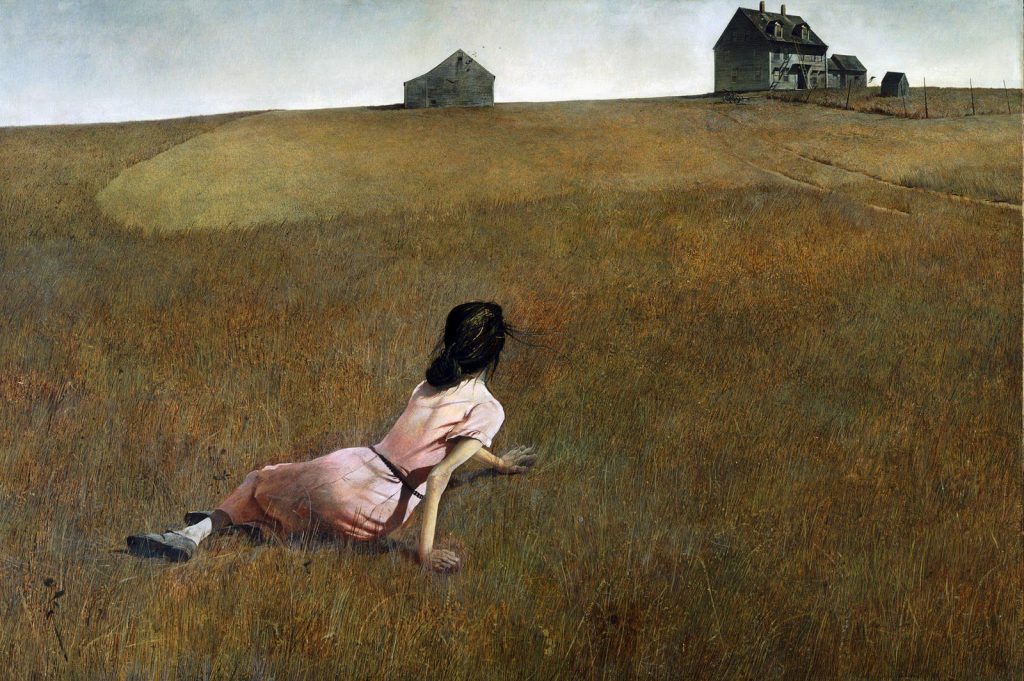
American realist painter Andrew Wyeth (1917–2009) is well recognized for his rural landscapes from Pennsylvania and Maine. He was raised in an artistic household; his father, N.C. Wyeth was a well-known illustrator. He was born in Chadds Ford, Pennsylvania. Completed in 1948, “Christina’s World” is among Andrew Wyeth’s most famous and iconic paintings. In the artwork, a young woman, Christina Olson, is shown lying in a field with her body hunched over and looking up at a far-off home perched on a hill. With dry grass and an expansive sky behind her, the scene looks desolate.
Niagara by Frederic Edwin Church
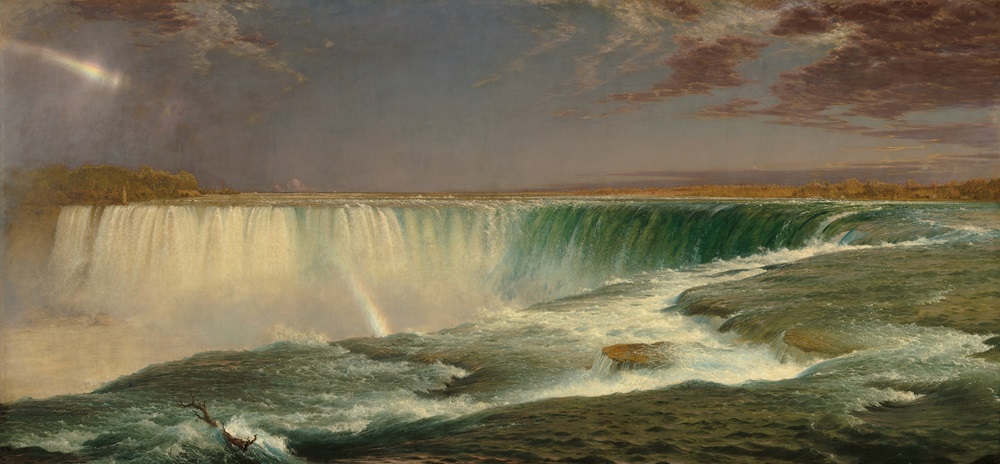
The famous painting “Niagara” is by American landscape painter Frederic Edwin Church. One of North America’s most famous natural wonders, Niagara Falls, is captured in this image, completed in 1857 and exudes a magnificent majesty and power. Church emphasizes the majesty and enormity of the falls by showing them from the American side in the picture. A rocky precipice provides the setting for the rushing waves, which are surrounded by mist and spray. The drama and size of the surrounding trees and greenery enhance the lush, green surroundings of the falls.
“Niagara” is praised for its ability to capture the breathtaking grandeur of the falls and meticulous attention to detail. Church captures the constantly shifting play of light and shadow on the sea with deft use of colour and light, adding drama and dynamism.
Whistler’s Mother
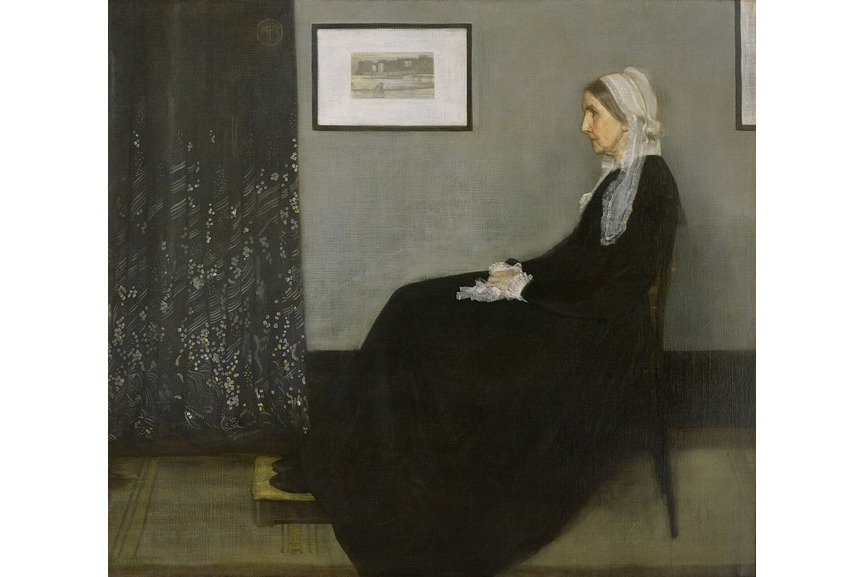
The famous American painter James McNeill Whistler’s “Whistler’s Mother” is formally known as “Arrangement in Grey and Black No. 1.” The picture, which was finished in 1871, shows Whistler’s mother, Anna McNeill Whistler, sitting in a chair in front of a simple background. The composition is characterized by a subdued colour scheme, with the scene primarily composed of grey tones. With her hands lying in her lap and her eyes focused straight ahead, Anna Whistler sits erect in the chair. Her look is serious and thoughtful, and she is dressed in a dark outfit with a white cap.
The film “Whistler’s Mother” is praised for its grace, simplicity, and sense of dignity. Whistler aimed to portray his mother’s inner power and spirit in addition to her outward appearance. The composition’s austere simplicity highlights the sitter’s quiet strength and presence, making the picture a study of contrasts.
Campbell’s Soup Cans

Pop artist and pioneer of the visual art movement Andy Warhol gained notoriety for combining advertising, pop culture, and the spirit of the times with art. The artist’s works investigate the relationship between advertising, artistic expression, and the celebrity culture of the 1960s. The groundbreaking piece of art “Campbell’s Soup Cans” was produced in 1962 by American artist Andy Warhol. It comprises thirty-two canvases, each featuring a different Campbell Soup arrangement in a grid pattern. Warhol made a groundbreaking artistic choice when he painted on such a commonplace and commercial topic. Warhol raised the prevalent to the level of great art and subverted conventional ideas of art by depicting a mass-produced consumer good.
Freedom From Want by Norman Rockwell
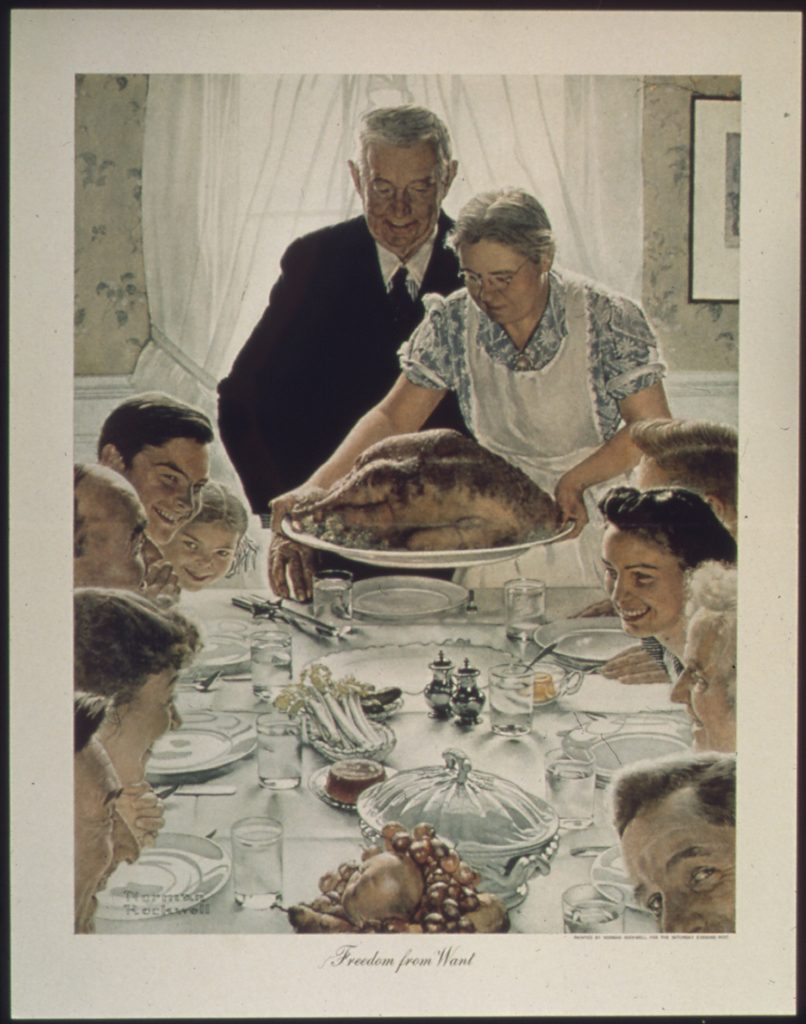
One of the four paintings in Norman Rockwell‘s well-known “Four Freedoms” series is “Freedom From Want.” The four fundamental freedoms President Franklin D. Roosevelt stated in his 1941 State of the Union Address—freedom of expression, freedom of religion, freedom from want, and freedom from fear—that he thought every person should be able to enjoy served as the inspiration for the television series. The movie “Freedom From Want” shows a vast family seated around a table for a joyous Thanksgiving feast, excitedly anticipating the family patriarch’s turkey delivery. Delectable food is on the table, and everyone is grinning and content. The scene’s cosiness and warmth inspire feelings of thankfulness, abundance, and community.
Portrait Of Madame X
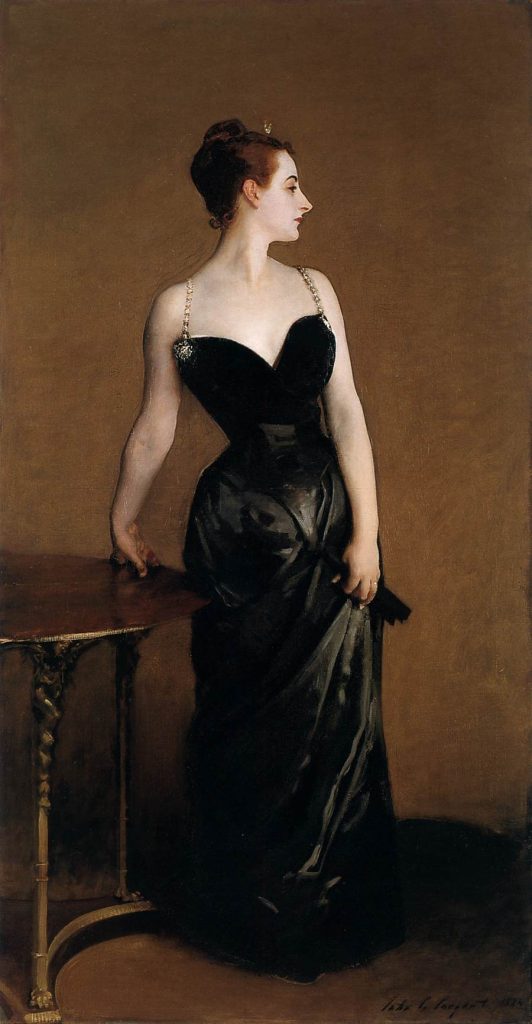
Famous American painter John Singer Sargent‘s “Portrait of Madame X” was finished in 1884. Madame Pierre Gautreau, a young socialite and famous Parisian, is shown in the portrait. She is renowned for her striking flair and beauty. Madame Gautreau appears radiant and pale against the dark fabric in the artwork, donning a beautiful black gown with a plunging neckline. She strikes a confident and elegant position with one arm raised behind her head and the other resting on her hip.
The Oxbow
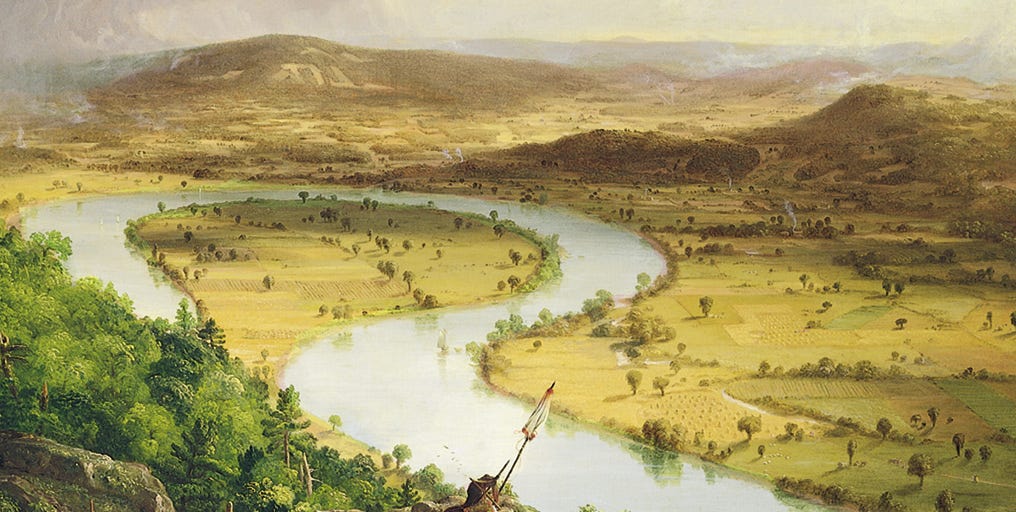
American painter Thomas Cole completed his “The Oxbow” landscape painting in 1836. “View from Mount Holyoke, Northampton, Massachusetts, after a Thunderstorm” is another name for it. It shows a broad view of Mount Holyoke in Massachusetts (today called Mount Tom), looking down on the Connecticut River Valley. There are two separate pieces to the picture. The scenery is untamed and wild on the left, with rocky terrain, stormy skies, mayhem, and instability. On the other hand, the painting’s right side is illuminated by sunlight and features a serene river meandering through the countryside, cultivated fields and a peaceful valley.
Many people read “The Oxbow” as a meditation on the conflict between development and preservation and civilization and the wild. It expresses Cole’s worries about the country’s fast industrialization and westward migration in the 19th century and his support for protecting the wildness and natural beauty of the nation.
The Heart Of The Andes
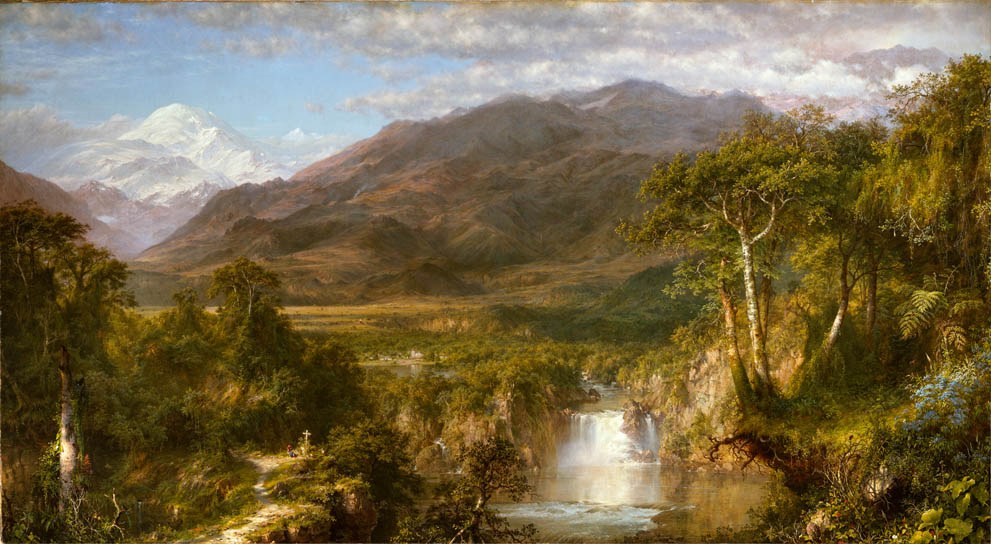
The renowned landscape painting “The Heart of the Andes” was finished in 1859 by American artist Frederic Edwin Church. It is regarded as a masterpiece by the Church and a significant item of American art from the 19th century. The picture captures the majesty and grandeur of the natural world by showing a panoramic vista of South America’s Andes Mountains. The area is filled with vibrant flowers and rich flora in the foreground, and in the distance, snow-capped peaks rise into the sky. A meandering river gives the impression of depth and perspective by guiding the viewer’s gaze deep into the mountains.
“The Heart of the Andes” is praised for meticulous attention to detail and atmospheric and light rendering. Church travelled to South America to study and sketch the terrain directly from the source, and he used his insights to produce an authentic and breathtaking painting.
Mountains And Sea
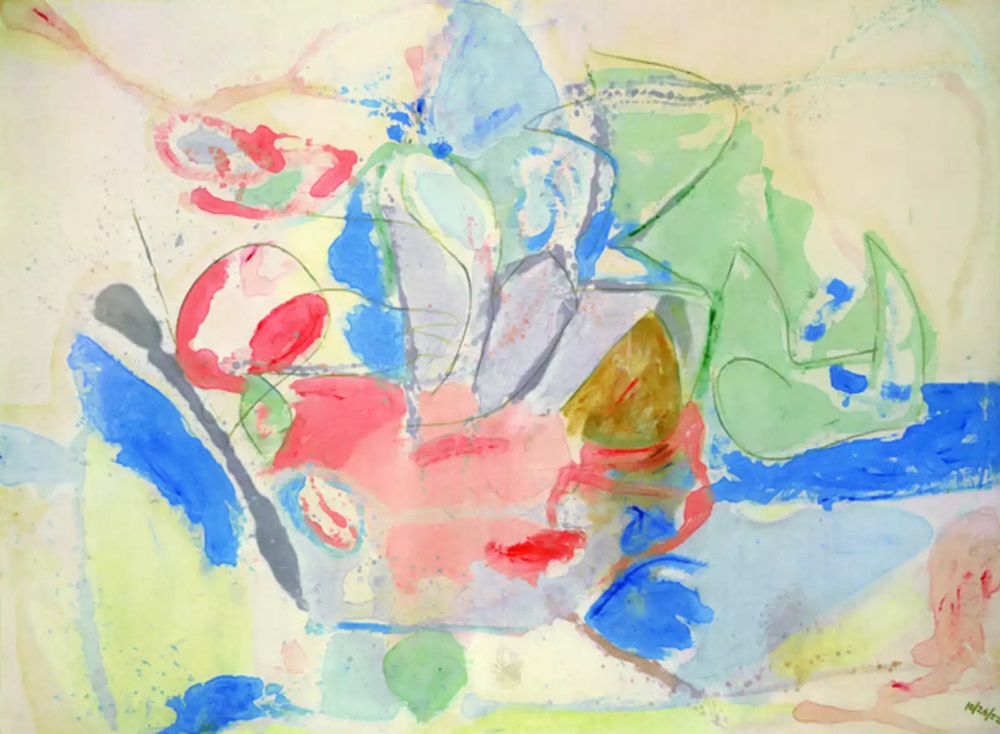
Completed in 1952, “Mountains and Sea” is a landmark work by American abstract expressionist Helen Frankenthaler. It is regarded as a pivotal moment in the evolution of abstract expressionism and one of Frankenthaler’s most significant pieces. In “Mountains and Sea,” Frankenthaler used diluted paint straight onto an unprimed canvas using her ground-breaking soak-stain method. Through this technique, the paint could seep into the canvas, producing vivid colour washes and translucent layers that give the picture a sense of depth and brightness.
“Mountains and Sea” does not, despite its title, actually feature mountains or the sea. Instead, it is an abstract landscape representation, with wavy lines and expressive brushstrokes that allude more subjectively and emotionally to the natural world.
Snap the Whip
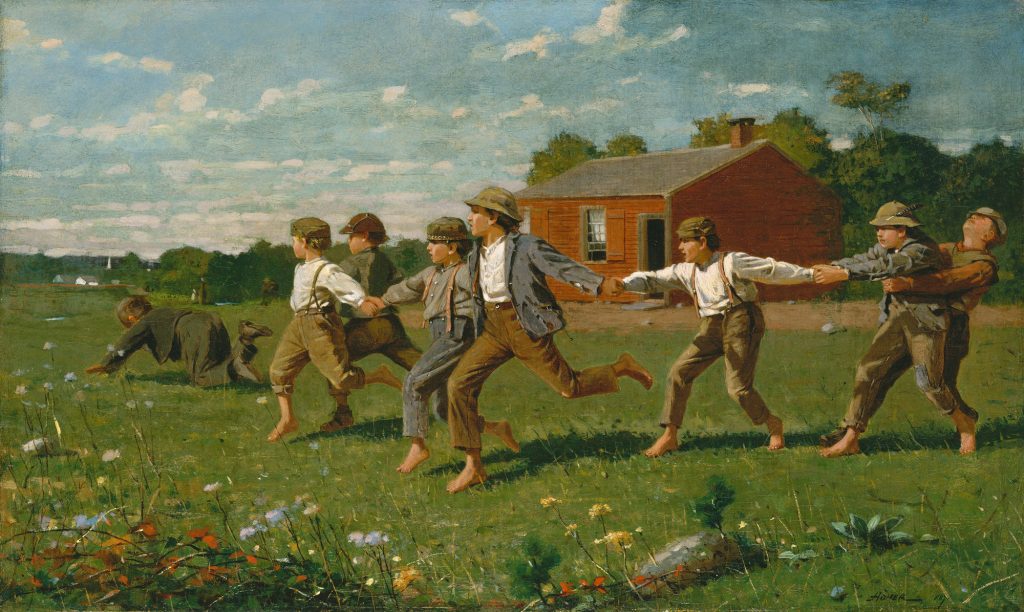
Winslow Homer’s well-known picture “Snap the Whip” was finished in 1872. It shows a bunch of schoolboys in a rural schoolyard engaging in a game of Snap the Whip. A group of boys are shown in the artwork holding hands and forming a human chain. At the end of the line, one of the boys “snaps the whip” by racing in a curve, setting the other lads in the line to follow. The lads laugh and yell as they play, adding to the scene’s vitality and movement. “Snap the Whip” is praised for portraying naiveté and the delight of outdoor play. Homer describes the carefree attitude of youth, the straightforward joys of boyhood, and the picturesque splendour of the American countryside.
Lansdowne Portrait
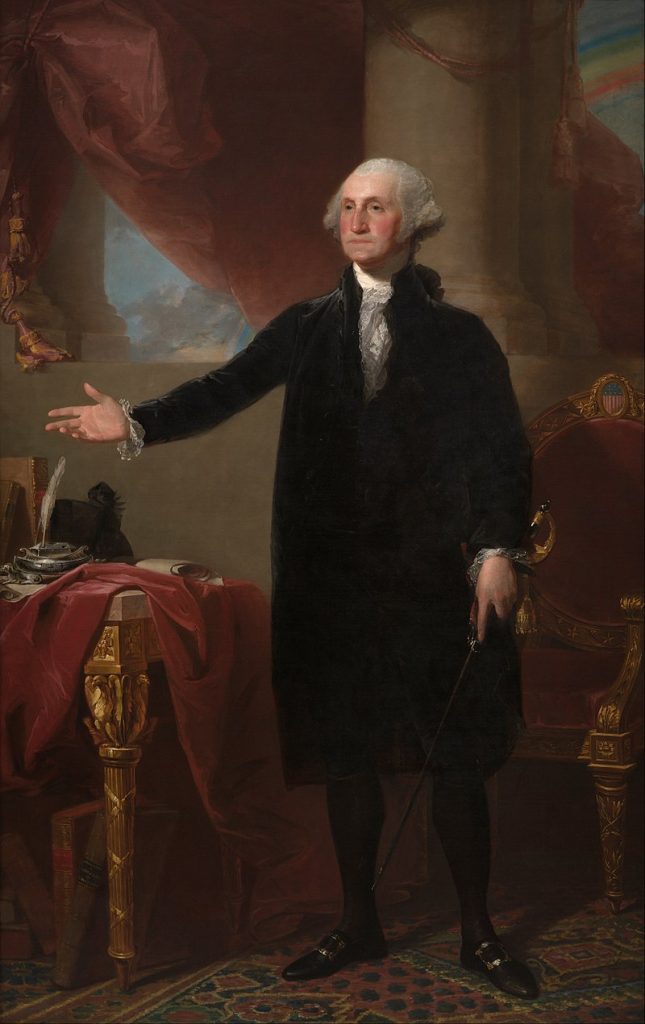
“Lansdowne Portrait” describes a well-known painting by Gilbert Stuart of George Washington, the nation’s first president. Pennsylvania senator William Bingham and his wife, Anne Willing Bingham, commissioned it in 1796. George Washington is shown in the image in a stately stance, his left hand clutching what is thought to be a copy of the Constitution while his right hand rests on a ceremonial sword. Washington symbolizes his position as a statesman and the head of the new country by dressing in a black velvet suit with a white shirt and a jabot.
No. 5 1948
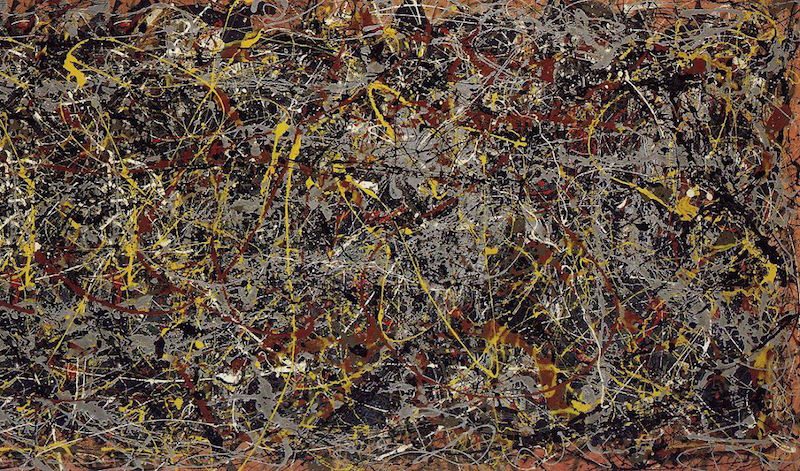
The famous abstract expressionist work “No. 5, 1948” was finished in 1948 by American artist Jackson Pollock. It is regarded as a turning point in the evolution of abstract painting and is among Pollock’s most well-known and significant pieces. The painting’s dynamic composition, unusual technique, and enormous scale (about 8 feet by 4 feet) define it. Pollock added paint to the canvas by dripping, pouring, and splattering it using sticks, brushes, and other objects rather than standard brushes. Pollock conveyed a sense of movement, energy, and spontaneity through this novel technique.
American art reflects a kaleidoscope of perspectives, voices, and experiences and is a vibrant testament to the country’s rich history, innovative spirit, and diverse cultural landscape. American art shows society’s evolution, individuals’ struggles and victories, and the dynamic dialogue between tradition and innovation. American art has influenced people worldwide and continues to enthral, excite, and challenge viewers despite its modest beginnings.


